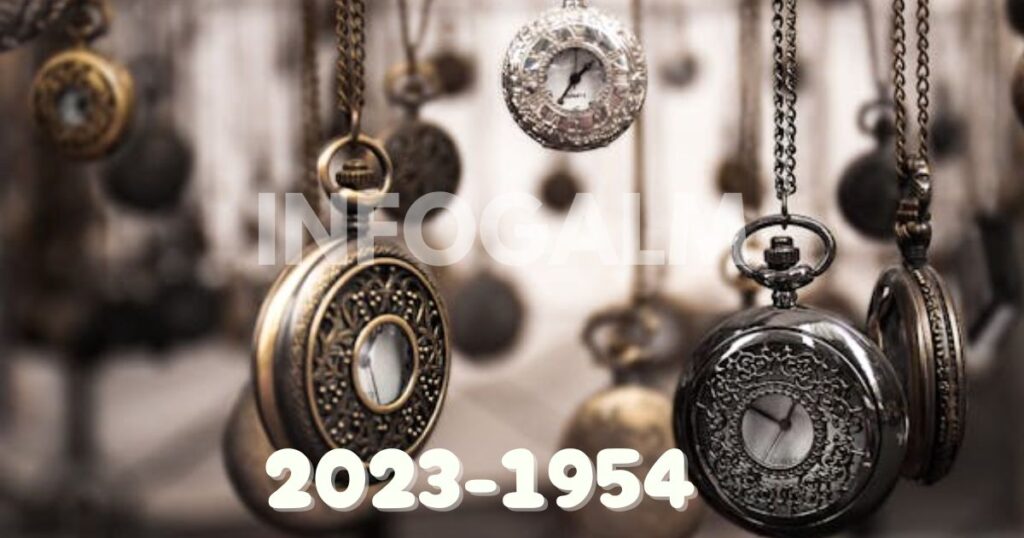Go along with us as we turn back the clock with a time machine to investigate the way of life of two unique periods: 2023-1954. Prepare for comparisons between these periods, including cultural movements, technological advancements, fashion trends, and music scenes that have shaped them. We will explore what makes these years so amazing and unique as we examine their similarities and differences. Let’s go!
Introduction to 2023-1954
History has an inconceivable approach to moulding our identity and how we live. By contrasting two distinct periods, 2023-1954, we can see how culture has developed over the years. From changes in gender roles and technological advancements to shifts in political scenes and style, this excursion through time features remarkable and fascinating developments over almost seventy years.
Gender Roles: From Traditional Norms to Inclusivity
1954: Strict Gender Roles
In 1954, gender identities were generally prescribed according to strict conventional customs. Men were often seen as the breadwinners, while women were typically housewives. Society emboldened such roles, limiting women’s career development opportunities and other personal ambitions. The cultural narrative was predominantly one-dimensional, with rigid expectations dictating every life aspect.
2023: Evolving Gender Norms and Inclusivity
Quick forward to 2023, and we see a huge shift towards gender equality. The advanced era has witnessed an increased recognition of LGBTQ+ freedoms and inclusivity in each part of life. Non-binary individuals are now starting to be accepted, making a comprehensive society that appreciates diversity like never before previously. There is no longer a set-in-stone ideal for gender roles, allowing much more freedom and flexibility for everyone.
Technology: From Radio Waves to Social Media
1954: The Era of Radio
Back in 1954, families enjoyed radio entertainment and news broadcasts from this electronic device, which unified people through sound waves. It only allowed one-way communication whereby listeners could only anticipate something being aired on the airwaves. The radio was the primary medium for disseminating information and providing entertainment.
2023: The Age of Social Media
The landscape ruled by technology has transformed dramatically by 2023. Today, we live in a world dominated by social media, where everything occurs in seconds as we connect with friends and family universally. Social media has empowered continuous discussions with people all over the globe. From dial-up internet connections to lightning-quick Wi-Fi speeds on handhelds, our transition from radio waves to social media significantly changes how we communicate and connect with the world.
Political Landscapes: From Cold War Tension to Modern Conflicts
1954: Cold War Era
The Old War era of 1954 was portrayed by worldwide pressure, with superpowers secured in a stalemate that moulded worldwide relations for decades. The world was split between East and West, and the threat of nuclear conflict loomed large. This period was set apart by espionage, propaganda, and pervasive fear and uncertainty.
2023: Complex Modern Conflicts
In 2023, clashes have developed into a complex web of regional disputes, terrorism, and cyber warfare. Asymmetric threats and non-state actors disturbing worldwide dependability have supplanted customary state-to-state clashes. The political scene is multifaceted, with new difficulties and open doors arising in the digital age. Cybersecurity, environmental change, and worldwide migration dominate the agenda.
Music and Entertainment: From Rock ‘n’ Roll to Streaming Services
1954: The Birth of Rock ‘n’ Roll
In 1954, rock ‘n’ roll made clamour and changed the music scene. Artists like Elvis Presley and Throw Berry revolutionized the industry. The time saw the ascent of vinyl records, permitting individuals to appreciate music at home. Rock ‘n’ roll’s rebellious soul resonated with the young, denoting a social shift towards more expressive and dynamic forms of entertainment.
2023: Diverse Music Genres and Streaming
By 2023, the music scene had dramatically differentiated. The graphs are ruled by hip-hop, pop, electronic dance music (EDM), and more classifications. Web-based features like Spotify and Apple Music have reformed how we listen to music, giving access to a large number of tunes readily available. Customized playlists and client proposals have made music utilization a more individualized encounter.
Fashion Trends: From Conservative Styles to Dynamic Blends
1954: Conservative Fashion
1954’s fashion embodied a more conservative and structured approach to style. Poodle skirts, tailored suits, and formal attire were the norms, reflecting the societal values of that time. Modesty and formality were emphasized, with clear male and female fashion distinctions.
2023: Fusion of Retro and Futuristic Styles
By 2023, the design had become an intense blend of retro recovery and current components. Classic styles like high-waisted jeans and neon tones have returned, mixing with avant-garde designs, including metallic accents and sustainable materials. Individuality and maintainability are emphasized through moral brands, with buyers progressively attracted to eco-friendly practices. Variety in the industry has likewise developed, with models of different ethnic backgrounds, body types, and gender identities represented in advertisements.
Social Attitudes and Movements: From Civil Rights to Global Activism
1954: The Civil Rights Movement
In 1954, the Civil Rights Movement in the United States began to gain momentum, challenging racial segregation and discrimination. Activists fought for equal rights and justice, laying the foundation for major social changes. This period marked a significant turning point in the struggle for racial equality.
2023: Broader Activism
By 2023, activism has expanded to include broader issues such as climate change, LGBTQ+ rights, gender equality, and more. Social movements are more interconnected globally, using digital platforms to organize, raise awareness, and drive change. Society’s social attitudes have become more inclusive, leading to a progressive society, though challenges and inequalities persist.
Conclusion: Reflecting on Progress and Continuity
Reflecting on the cultural shifts between 1954 and 2023, we see significant technological advancements and changes in gender roles, political landscapes, music, fashion, and social attitudes. Despite the progress, some similarities persist, illustrating our ongoing journey towards improvement. The transformation from 2023-1954 showcases our capacity to adapt and innovate while maintaining a desire for connection, creativity, and making a difference. As we move forward, let’s not forget the lessons of past generations as we navigate the ups and downs of the future.







